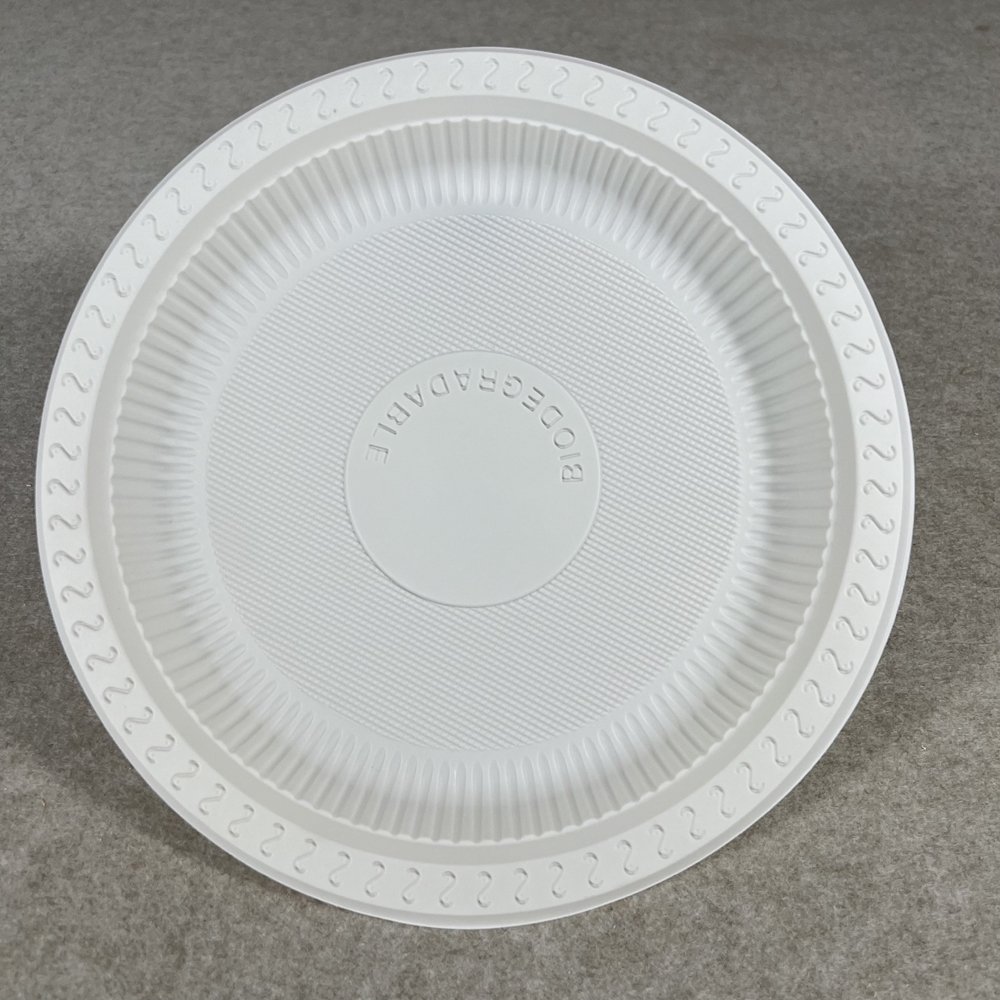Stop Buying “Compostable” Plates That Won’t Degrade—Here’s What Works
🌍 Introduction: The Compostable Illusion
Walk into any eco-friendly store or scroll through green packaging suppliers, and you'll find a familiar pitch: “compostable plates” that promise to save the planet. They’re everywhere—sleek, glossy, palm-stamped with “biodegradable,” and often made of cornstarch or so-called compostable plastic.
But here’s the uncomfortable truth: many of these plates don’t degrade as claimed. They’re often made from bioplastics that only decompose under specific industrial conditions—if at all—and when improperly disposed of, they become just as problematic as traditional plastics.
In this blog, we dig deep into what makes a cornstarch plate truly compostable, what certifications matter, what products to avoid, and what solutions genuinely work for foodservice brands, events, and eco-conscious consumers.
❌ The Problem With “Compostable” Greenwashing
Compostable packaging is booming, projected to reach $31.7 billion globally by 2028 (Allied Market Research, 2023). However, this surge has also brought a wave of misleading claims, particularly around cornstarch disposable plates and compostable plastic plates.
Why?
Because many of these products:
-
Contain PLA (polylactic acid), which looks compostable but only degrades in high-heat, industrial composters
-
Use synthetic binders or coatings that prevent natural decomposition
-
Lack internationally recognized compostability certifications
-
Leave microplastics or do not decompose at all in backyard compost bins
This misrepresentation leads to contamination in composting facilities, consumer confusion, and ultimately—more waste, not less.
🌽 Cornstarch Plates: Are They Always Eco-Friendly?
Cornstarch, often the base material in cornstarch plates, is a biopolymer typically processed into PLA. PLA is a bioplastic, but it behaves much like traditional plastic unless under strict industrial composting conditions (58°C+, moisture, airflow, microbial activity).
Problems with typical cornstarch disposable plates:
-
They do not degrade in landfills or oceans
-
Often require commercial composting, which many cities lack
-
Appear identical to plastic, confusing sorting systems
-
Degrade too slowly in backyard composters, if at all
So yes, cornstarch plates can be compostable—but only when they meet certain criteria.
✅ What Actually Works: Certified, Fiber-Based Compostables
The good news? There are compostable plates that truly work, both in commercial and home composting environments.
Look for fiber-based plates made from:
-
Sugarcane bagasse (a byproduct of sugar production)
-
Wheat straw fiber
-
Uncoated or water-based coated bamboo pulp
-
Certified PLA + fiber hybrids (if labeled correctly)
These materials are:
-
Naturally biodegradable
-
Plastic-free or lined with compostable coating
-
Proven to decompose in under 90 days
-
Often home compostable, reducing infrastructure dependence
🔍 Why Certification Is Non-Negotiable
No matter what the marketing says, only third-party certifications can verify a product’s compostability.
Look for these globally recognized labels:
If your cornstarch plate or compostable plastic plate doesn’t carry one of these certifications, chances are—it’s not compostable in practice.
🧪 Real-World Breakdown: Study Results
A 2023 study from the University of Copenhagen tested 50 “compostable” plates sold online and in retail:
-
Only 38% of cornstarch disposable plates degraded under home composting
-
60% of compostable plastic plates left behind fragments
-
Certified bagasse fiber plates fully composted in 80 days
-
Only 22% of products had clear, visible certifications
Conclusion: Without certification, “compostable” means almost nothing.
🧠 What to Ask Your Supplier Before Buying
-
Is the plate certified compostable by a recognized body?
-
Is it home compostable or industrial-only?
-
Does the coating or liner degrade as well?
-
What’s the real decomposition timeline?
-
Can you provide third-party lab test data?
If the supplier cannot answer these questions confidently, don’t buy.
🛍️ Buyer’s Checklist: Compostable Plates That Actually Work
✅ Made from renewable raw materials (not just bioplastic)
✅ Certified by EN 13432, ASTM D6400, or OK Compost
✅ Decomposes in <90 days in proper composting
✅ Compatible with municipal composting programs
✅ Labeled with correct end-of-life instructions
🏢 Supplier Highlight: Xiamen Bioleaderpack Co., Ltd.
If you’re sourcing certified compostable plates in bulk, we recommend Xiamen Bioleaderpack Co., Ltd.
Why Bioleaderpack?
-
✅ Specializes in certified cornstarch disposable plates and fiber-based compostables
-
✅ Holds EN 13432, ASTM D6400, and OK Compost certifications
-
✅ OEM/ODM custom branding for restaurants, QSR chains, and events
-
✅ Offers leak-proof, heat-resistant designs that perform like plastic
-
✅ Ships globally from China to over 40 countries
❓ FAQ: Top Google Questions About Compostable Plates
1. Are all cornstarch plates compostable?
No. Most cornstarch plates contain PLA or other additives that only degrade in industrial facilities. Always check for certifications like EN 13432 or ASTM D6400.
2. What’s the difference between compostable and biodegradable plates?
Biodegradable means it breaks down eventually. Compostable means it breaks down quickly and completely, without leaving harmful residue—usually within 90 days.
3. Can I compost compostable plastic plates at home?
In most cases, no. Most compostable plastic plates require high temperatures and controlled environments only available in industrial composting facilities.
4. How long do certified compostable plates take to decompose?
In industrial composters, certified plates degrade within 60–90 days. Home composting may take longer, depending on material and climate.
5. Where can I buy real compostable plates in bulk?
Suppliers like Xiamen Bioleaderpack Co., Ltd. offer certified, high-performance compostable tableware including cornstarch plates and molded fiber solutions.
✅ Final Thoughts: Choose Smart, Not Just “Green”
It’s easy to be misled by eco-friendly claims—especially when the packaging looks biodegradable, feels natural, or includes buzzwords like “cornstarch” or “plant-based.”
But don’t be fooled.
What really matters is what happens after the meal. If the plate doesn’t degrade—or ends up in landfill or contaminates composting systems—it’s part of the problem.
Choose certified. Choose transparent. Choose what works.




Comments